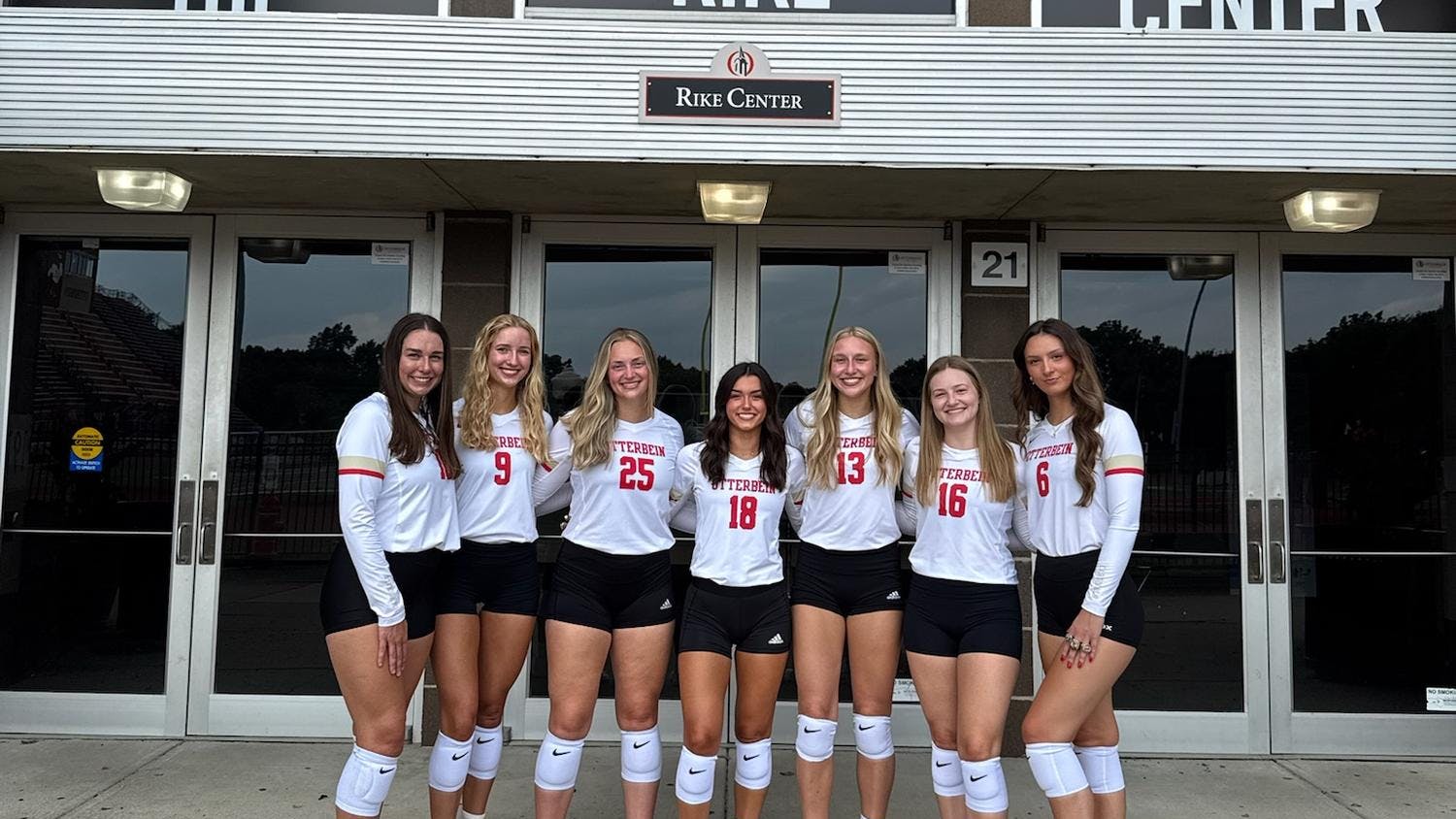Uploading work to ePortfolio for Integrative Studies is just as much for Otterbein’s use as for the students who do it.
The online system, which was adopted last year in conjunction with the introduction of the new INST program, is largely intended as a way for the program to assess whether it is accomplishing its goals and to identify what adjustments need to be made to the curriculum.
According to Denise Shively, the chair of the INST program, “Students are asked to use ePortfolio as a place to collect work, so that by the time students graduate, from an Integrative Studies perspective, we can go back and see if students are meeting program goals.”
Beginning with the class of 2015, students are taught to use ePortfolio in their First Year Seminar and are expected to collect essays, projects, and other “evidence” of their learning throughout their time at Otterbein, particularly in their Integrative Studies courses.
The template for the “INST Portfolio” also includes program goals and prompts for students to reflect upon each class.
It includes a section for each thread, or class set (INST 1500, 2000, 2200, etc.), of the INST program, and each section includes the goals for that thread and a location to gather a student’s “works and reflections.”
Shively said that the INST program plans to use these portfolios as a way to review and assess the Integrative Studies curriculum. This assessment will be done by selected faculty.
Shively said that it will not be assessing specific students so much as the Integrative Studies as a whole in order to see whether its goals are being accomplished.
“Right now, we are working on the assessment for the new curriculum,” Shively said. “That process is being developed by the Integrative Studies Advisory Committee.”
Eventually, the INST program’s goal is to assess what students have learned over a full four years in the new curriculum.
It will not be assessing individuals’ writing abilities, but examining the effectiveness of the program.
“We want to look at a student’s total learning in the INST program,” she said.
In order to accomplish this, monthly or bi-monthly workshops are available to professors and peer mentors for training in using ePortfolio, and they are encouraged to use it in their classes.
English professor James Gorman used ePortfolio as a means for visual presentations in his First Year Seminar class last year.
“It’s an advancement compared to PowerPoint,” he said, adding that some students even uploaded PowerPoints onto their ePortfolio.
“Technology is not one of my strengths because of my age, but I’m catching up,” he said. “ePortfolio is easy to use. It’s graphically easy without too much skill.”
The Web design system allows users to insert audio-visuals, rich text and even buttons to share the portfolio on social websites.
Gorman is using ePortfolio again this year with INST 1500: Reading and Writing the Road. Students will create a graphical essay reflecting on both a reading in class and the “road” they see themselves going on.
The ePortfolio system is available to all students, regardless of class rank, as well as faculty and alumni.
It can also host portfolios besides the pre-designed one for the INST program.
Colin Saunders, informational technologist and the “unofficial project manager” of ePortfolio training, said that ePortfolios
allow students to collect their work for academic, professional or resume purposes and special interests such as athletics or clubs.
“ePortfolio allows students to decide what to keep, what’s important,” he said. “When you graduate, you’ll have this really nice representation of what you did.”
For some, this might be a collection of exemplary papers, creative projects or whatever else students want to use it for. Saunders said that, for example, equestrian students have used ePortfolio to upload and share videos.
“Think of it as a mini website,” Saunders said.
This sharing platform can also be used for resumes.
Ryan Brechbill, director of the Center for Career and Professional Development, said in an email interview, “I’ve seen an increase in students’ use of electronic portfolios over the past four to five years.”
“They can be a great complement to the experiences listed on a resume and another demonstration of a candidate’s skills.”
While a website-style resume might not fit all professions, Brechbill said, “Professions that involve output such as
designs, artwork, lesson plans, etc. are more likely to place a greater value on a digital port-folio.”
To students using ePortfolio as a resume tool, he recommends: “Focus on the message and skills/experiences you want to share. Don’t complicate the portfolio or clutter it with examples of all of your work. Like your resume, it should be viewed as a highlight reel, not an autobiography.”
As a professor in the English Department, Gorman likes the creativity ePortfolio allows.
He said that English majors are used to expressing themselves through written work, “but I think there are a lot of majors that don’t have a way of presenting themselves.”
According to some students, the Otterbein community is still getting to know the ePortfolio system.
“Last year, I only used it once or twice for an FYS class, and I’ve never used it again,” said Tyler Perry, a sophomore music education major.
Freshman graphic design major Brennan McCotter said that he doesn’t really know how it works.
“I barely get the chance to use it,” he said.
Saunders believes that the low enthusiasm comes from the newness of it.
He said, “It’s not underused necessarily, but more students will start to use it as they understand what it can do.”








